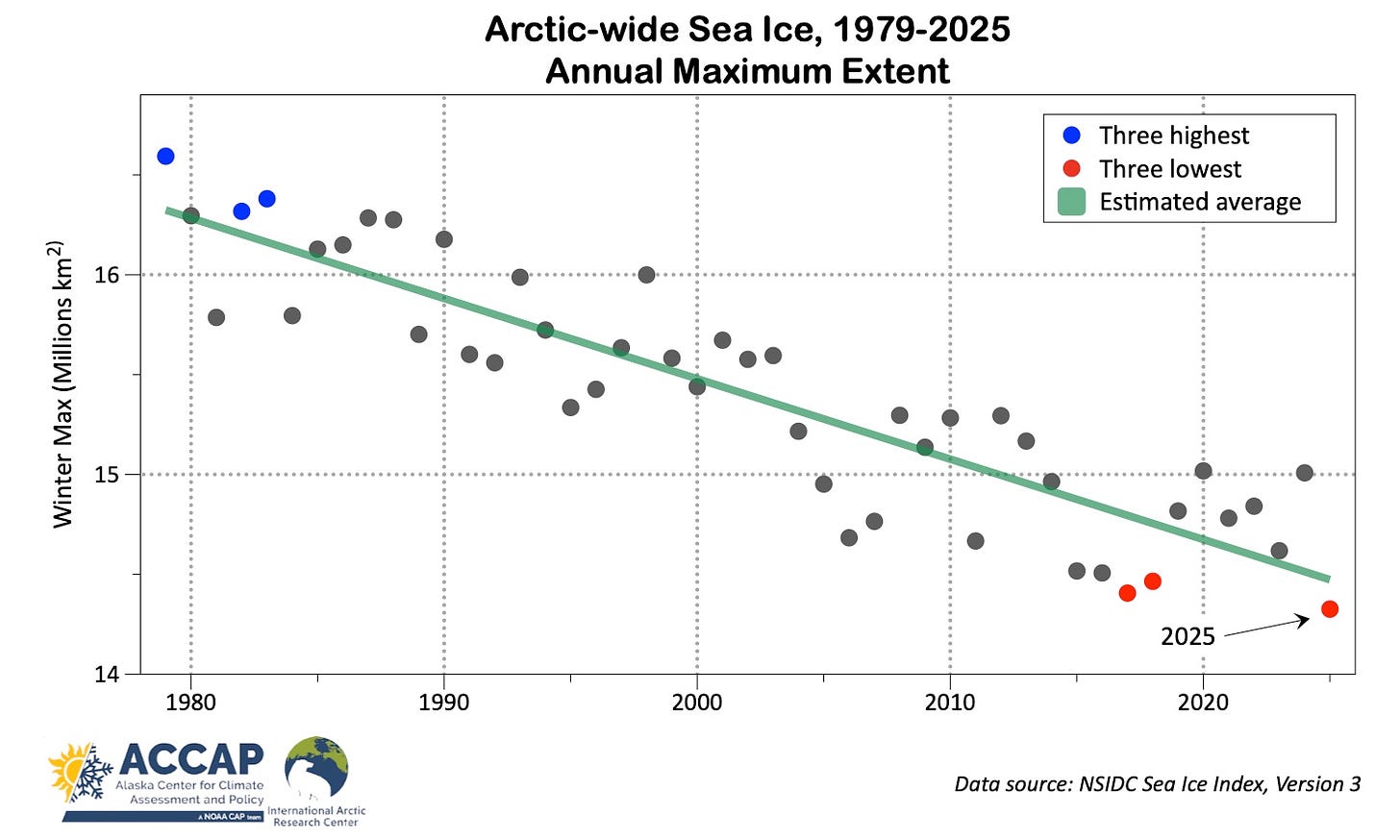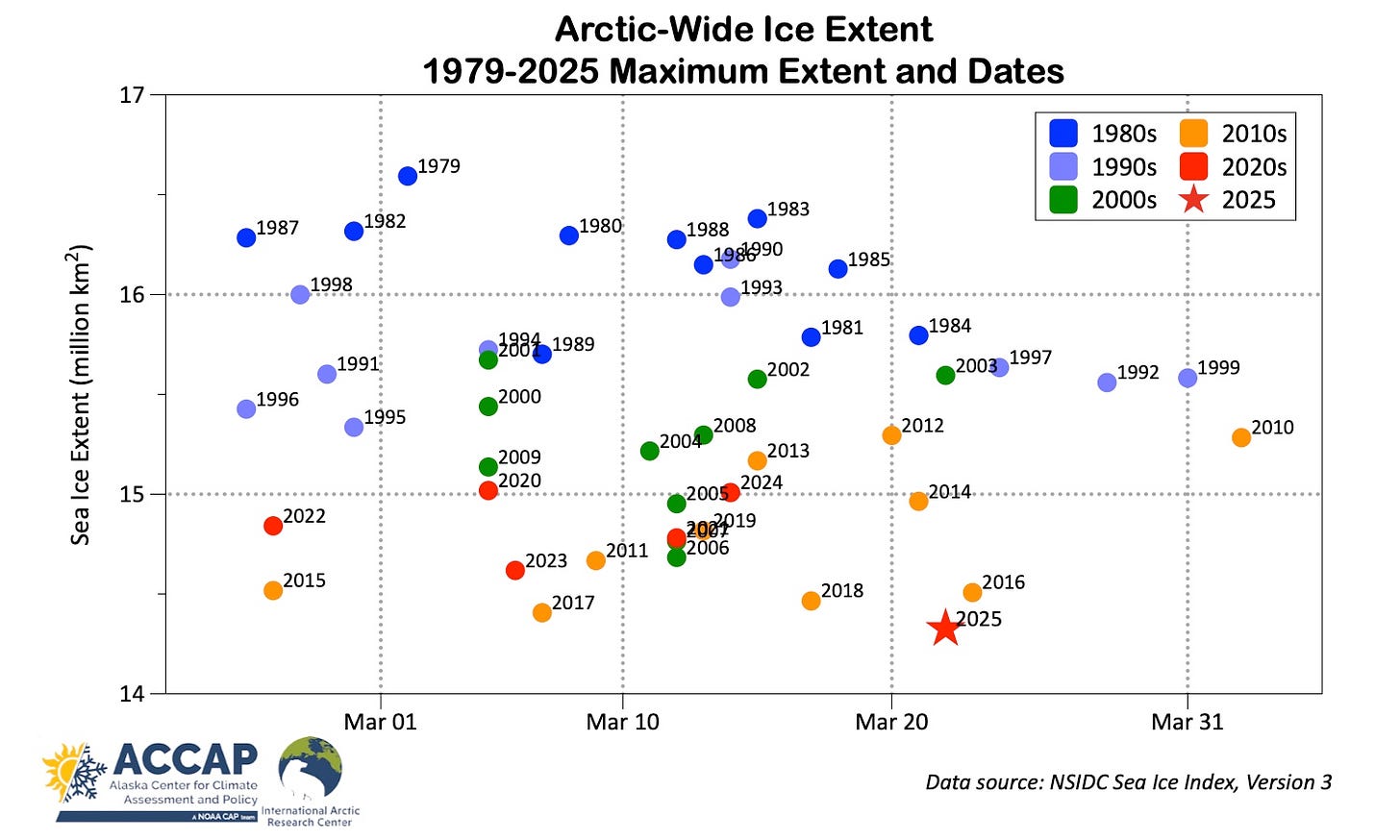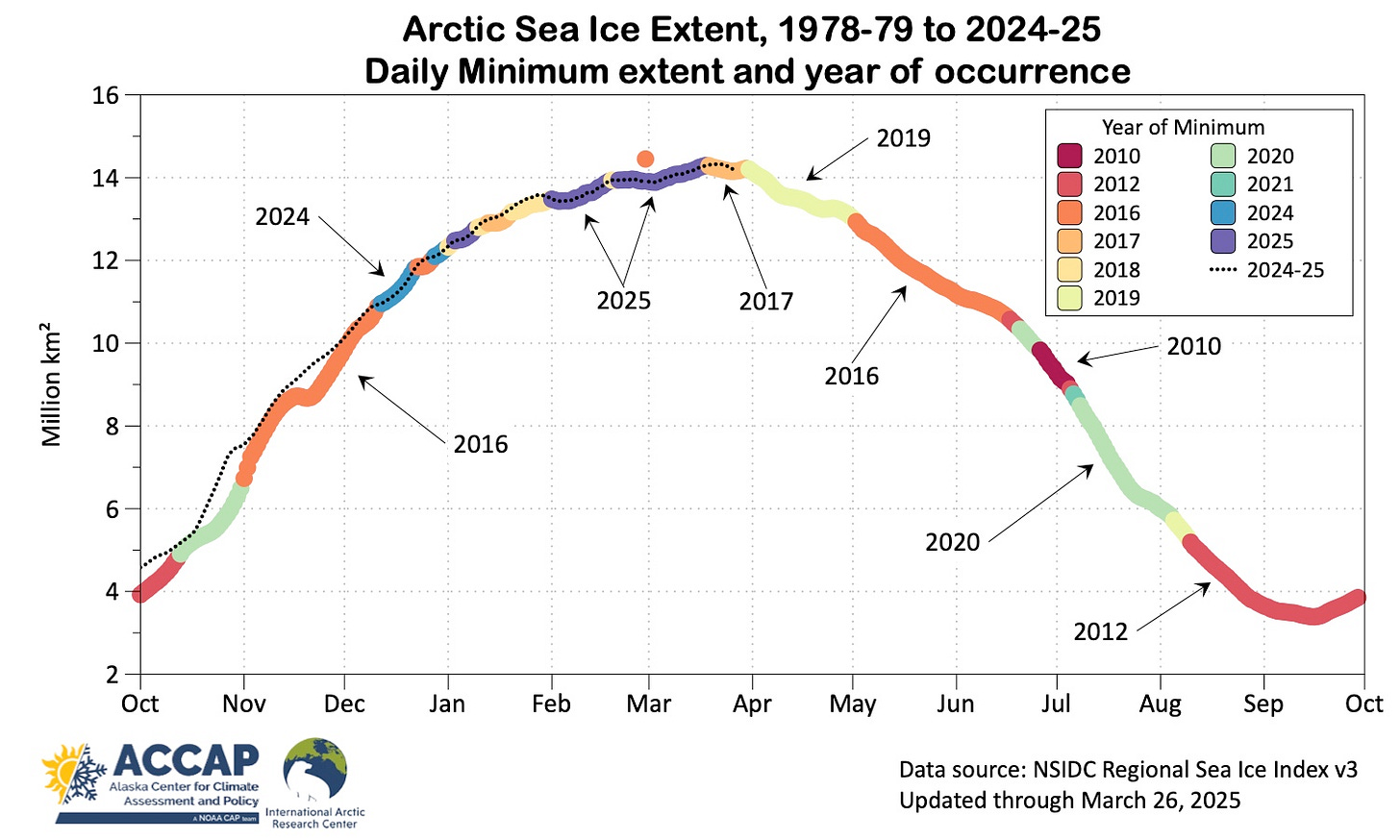The 2025 Maximum
The northern hemisphere’s annual maximum extent of sea ice occurred around March 22. Figure 1 shows the spatial extent of the ice (15 percent or higher concentration) on this date from National Snow and Ice Data Center (NSIDC) analysis. The sea ice edge was behind the 1981-2020 median almost everywhere, but especially in the Sea of Okhotsk and eastern Barents Sea.
Of course, ice extent does not change synchronously across the Arctic. For instance, ice extent in the Bering Sea continued to expand a week after the Arctic-wide maximum, while ice extent in the Sea of Okhotsk peaked more than a week prior to the Arctic-wide maximum.
Most significantly, the maximum extent in both the NSIDC and Japan Aerospace Exploration Agency (JAXA) datasets was the lowest annual maximum in the 47 year satellite record, slightly lower than the 2017 and 2018 maximums. Figure 2 plots the maximum extent each year in NSIDC data. While there is year-to-year variability, the trend since the late 1970s is consistent and shows about an 11 percent decrease in the estimated average annual maximum extent.

The maximum extent this year occurred more than a week later than last year and was the latest maximum since 2016. Figure 3 plots the maximum extent and dates from in the NSIDC data each year since 1979. There is no significant trend during the past 47 years of the timing of the maximum extent.

Arctic sea ice was slow to expand following the September 2024 minimum, and I wrote about the December daily record low extent here. This continued into the new year, and overall sea ice extent was the lowest in the NSIDC data on 67 days between December 2024 and mid-March 2025. Figure 4 shows the lowest daily extent and the year of occurrence throughout the year.

Looking ahead
You might expect that a very low March maximum portends an especially low September minimum, but that has not been the case in years past. The physical reason is pretty straight forward. The March maximum extent is a function of how much ice there is or isn't in some of the peripheral Arctic seas: the Bering Sea, Sea of Okhotsk, Greenland Sea and the Barents Sea: the central Arctic basin and adjoining seas have no open water in March. By September, the peripheral seas will be all open water except for (usually) small areas in Greenland and Barents Seas. The September sea ice extent minimum will be primarily determined by what happens with ice in the Kara, Laptev, East Siberia, Chukchi, and Beaufort Seas.
Late March sea ice thickness may play a role in what happens later this year, and total ice volume was much lower in late March 2025 than the same time in 2024. But ice thickness is not everywhere lower. In Fig. 5, the modeled sea ice thickness from the Danish Meteorological Institute for March 27, 2025 is shown on the left and the same date in 2024 shown on the right.

Some differences of note that may play into the summer 2025 ice extent. Near the Alaska Beaufort coast (marked as #1 in fig 5, left), there was less of a contrast in thickness between nearshore and offshore this year compared to last year. North of the Canadian Arctic Island (#2), ice well offshore is significantly thinner this year than last year. This is even more pronounced in the Laptev Sea (#3), with ice this March much thinner compared to late March 2024.





This is very discouraging news for those of us interested in our planet having a polar ice cap. Miocene 2.0 anyone? Thanks Rick, but I'm depressed at the implications of the trend lines continuing as they likely shall.